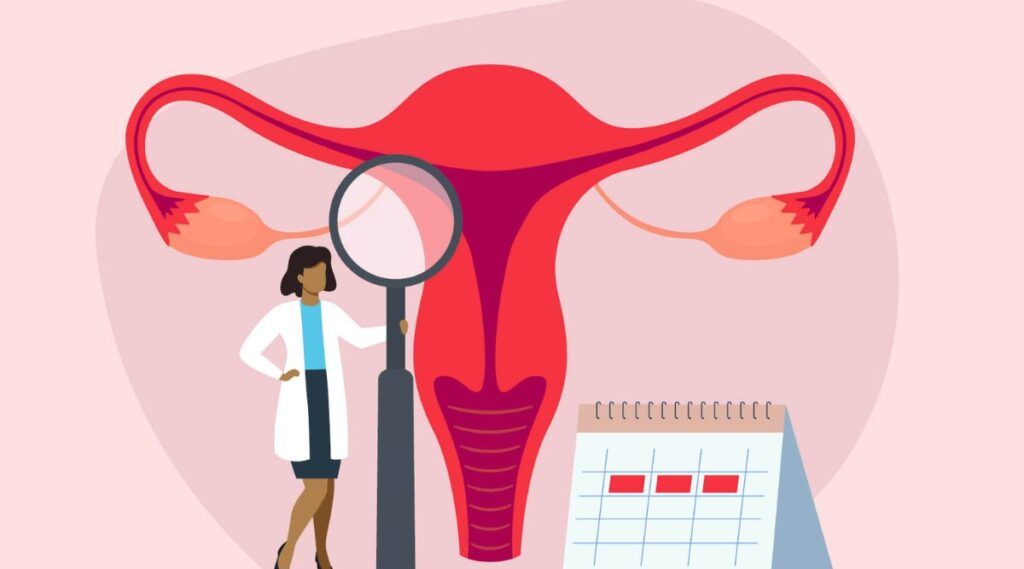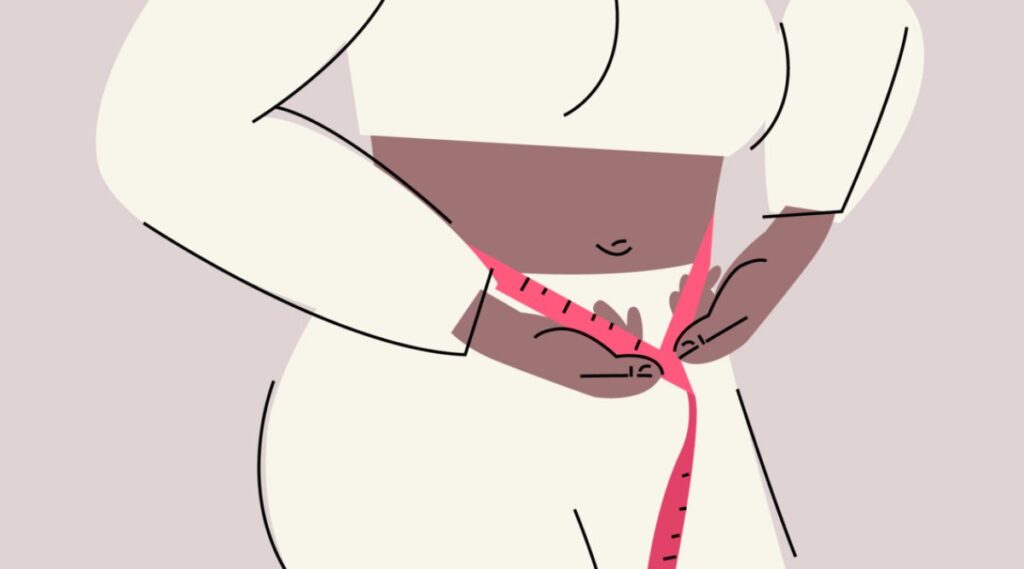Tracking your cycle after a hysterectomy involves monitoring your body’s signs and symptoms every month even though you no longer have periods. If your ovaries were preserved, you may continue experiencing menstrual-like hormonal changes that can be tracked using ovulation prediction kits. Without ovaries, you will no longer cycle and may need hormone therapy. Keeping a log of breast tenderness, headaches, and other recurring symptoms can help identify patterns and notify your doctor of any postoperative issues.
Even after your uterus is gone, your body still follows a natural monthly cycle. While you no longer bleed each month, your ovaries continue to release eggs if they were left intact during your hysterectomy. Tracking certain recurring symptoms on a calendar can reveal patterns that correspond with this underlying cycle. Learn some simple ways you can monitor your body’s cues and share the insights with your doctor, helping both of you stay aware of your health after the hysterectomy.
How To Track Your Cycle Without A Uterus

For women who have had a hysterectomy, it’s important to still track your cycle even though you no longer have a uterus. Tracking your cycle after a hysterectomy allows you to be aware of hormonal changes throughout the month. The two main methods for tracking are basal body temperature and ovulation prediction kits. Basal body temperature involves taking your temperature every morning before getting out of bed to monitor slight temperature changes related to ovulation.
Ovulation prediction kits test urine to detect luteinizing hormone surges which occur one day before ovulation. By combining basal body temperature tracking with ovulation kit testing, you can predict when you are most fertile each month even without a uterus. This helps with family planning if you are in a relationship.
How To Track Your Menstrual Cycle If You Don’t Have A Period (And Why It’s Important)
Tracking your menstrual cycle after a hysterectomy, even without a period, is crucial for holistic health. While you may not experience traditional menstrual cues, changes in mood, energy levels, and subtle physical indicators can offer valuable insights. Monitoring these fluctuations in your cycle after hysterectomy aids in understanding your hormonal patterns, promoting overall well-being.
Identifying irregularities enables early detection of potential health issues, contributing to proactive healthcare management. Utilize alternative methods like temperature tracking, hormonal level assessments, or period tracker apps to map your unique cycle. Empowering yourself with this knowledge fosters a deeper connection with your body, fostering informed decisions for optimal health.
What Are The Benefits Of Tracking Your Menstrual Cycle?
Tracking your menstrual cycle offers several benefits that can enhance your overall health and well-being. Here are some key advantages:
- Understanding your body: By tracking your menstrual cycle, you gain insights into your unique hormonal patterns and how they affect your physical and emotional state. This knowledge allows you to better understand yourself and anticipate changes in mood, energy levels, and cravings.
- Predicting fertility: Tracking your menstrual cycle can help you identify your fertile window, enabling you to plan or prevent pregnancy more effectively. This knowledge is particularly valuable for individuals trying to conceive or practicing natural family planning methods.
- Managing symptoms: Many people experience physical and emotional symptoms during certain phases of their cycle. By tracking your cycle, you can identify patterns and anticipate symptoms such as bloating, cramps, or mood swings. This allows you to take preemptive measures, such as adjusting your diet, exercise routine, or self-care practices.
- Monitoring reproductive health: Regularly tracking your menstrual cycle enables you to detect any abnormalities or irregularities. Changes in cycle length, flow, or other patterns can be indicators of underlying health conditions that may require medical attention.
- Improved self-care: Tracking your menstrual cycle encourages you to prioritize self-care during specific phases. You can tailor your exercise routine, dietary choices, and sleep patterns to align with your hormonal fluctuations, promoting better physical and emotional well-being.
- Effective communication with healthcare providers: When you have a detailed record of your menstrual cycle, it becomes easier to communicate with healthcare providers about any concerns or issues related to your reproductive health. This information assists in accurate diagnosis and personalized treatment plans.
Remember, tracking your menstrual cycle is a personal choice, and it can provide valuable insights into your body and reproductive health.
How To Track Menstrual Cycle With Period Tracker Apps
Period tracker apps provide an easy way to digitally log your menstrual cycle. Most apps allow you to enter details like the start and end date of your period as well as symptoms experienced. Many apps take it a step further, predicting your most fertile window based on entered past cycle data. Users can log characteristics such as flow level, cramps, mood and more. Trackers often send reminders for upcoming periods.
Some integrate with other health apps to sync activity, weight, supplements and more. Tracking cycles digitally makes it simple to look back at patterns over time from your phone or computer. Period apps simplify the process of understanding and documenting your monthly menstrual health.
Reliable Methods For Tracking Your Post-Hysterectomy Cycle

Effective monitoring after a hysterectomy involves consistent, reliable methods. Regular hormonal tests, health check-ups, and communication with healthcare providers are essential. Hormonal level assessments provide valuable insights into your body’s adjustments, ensuring a proactive approach to any potential issues. By adopting these reliable methods, you can confidently navigate your post-hysterectomy journey towards optimal health.
Understanding Your New Cycle
Post-hysterectomy, comprehending your new cycle involves recognizing hormonal shifts and physical changes. While devoid of traditional menstrual cues, heightened awareness of mood fluctuations, energy levels, and other subtle signals is key. Embrace this new cycle as a unique expression of your body’s equilibrium, fostering a deeper understanding of your overall well-being.
Tracking Methods
Explore diverse tracking methods tailored to post-hysterectomy nuances. Temperature tracking, hormonal level assessments, and period tracker apps offer valuable insights. Choose a method aligned with your lifestyle and preferences, ensuring consistent monitoring for accurate results. These personalized tracking methods empower you to stay connected with your body and proactively manage your health.
Monitoring Symptoms and Signs
Vigilant monitoring of symptoms and signs post-hysterectomy is crucial for early detection and intervention. Be attuned to potential indicators like pain, discomfort, or hormonal imbalances. Regular communication with healthcare professionals ensures prompt attention to any anomalies. By consistently monitoring symptoms and signs, you contribute to your overall well-being and foster a proactive approach to post-hysterectomy health management.
What Are The Symptoms Of Ovarian Cysts After Hysterectomy?
Ovarian cysts are fluid-filled sacs or pockets that develop inside the ovaries. Even after undergoing a hysterectomy (surgical removal of the uterus), it’s still possible for a woman to develop cysts on her ovaries since they are usually left intact during the procedure. Symptoms of ovarian cysts developing after hysterectomy can include pain, bloating, and pressure in the lower abdomen. As cysts grow in size, they may cause the abdominal area to appear swollen or extended.
Other potential symptoms are discomfort during sex, difficulty eating due to abdominal fullness, and heightened urinary frequency from cyst pressure on the bladder. Most ovarian cysts cause mild or no symptoms, but it’s important for women who have had hysterectomies to see their gynecologist if cyst-related symptoms persist or worsen over time.
How To Monitor Hormonal Changes After A Hysterectomy
It’s important for women to monitor their hormone levels after a hysterectomy, as removing the uterus can impact production of hormones like estrogen and progesterone. Pay attention to any new symptoms that develop in the months following surgery. Note changes in hot flashes, night sweats, vaginal dryness or changes to your sex drive or mood.
These could indicate declining estrogen. Make annual appointments with your gynecologist to have your hormone levels tested through bloodwork. Be on the lookout for signs of early menopause. Addressing hormone issues with treatments like local estrogen therapy can help alleviate uncomfortable symptoms as your body adjusts after hysterectomy. Keeping on top of hormonal changes allows you and your doctor to proactively manage your health.
FAQ’s
Can I track my cycle after a hysterectomy?
Yes, despite not having a traditional menstrual cycle, you can track hormonal changes and other relevant indicators.
What are reliable tracking methods post-hysterectomy?
Consistent hormonal tests, health check-ups, and period tracker apps are reliable methods for tracking post-hysterectomy cycles.
How do I understand my new cycle after a hysterectomy?
Understanding involves recognizing shifts in mood, energy levels, and other subtle signals that indicate your body’s unique equilibrium.
Can I use period tracker apps without a period?
Certainly. Period tracker apps can be adapted to monitor alternative factors, providing a useful tool for post-hysterectomy tracking.
Why is monitoring symptoms important post-hysterectomy?
Monitoring symptoms is crucial for early detection of potential issues, ensuring timely intervention and proactive health management.
Conclusion
In conclusion, tracking your cycle after a hysterectomy requires a different approach due to the absence of a uterus. While traditional methods like monitoring menstrual flow or ovulation are no longer applicable, there are alternative ways to track your body’s hormonal changes. These include monitoring secondary signs of hormonal fluctuations, tracking other physiological indicators like body temperature or cervical mucus consistency, and utilizing wearable devices or smartphone apps. It is crucial to consult a healthcare professional or a reproductive specialist familiar with post-hysterectomy cycle tracking for personalized guidance. Remember, understanding your unique hormonal patterns can still provide valuable insights into your health and well-being, even after a hysterectomy. Learn more information “Women’s World Tour Cycling“








